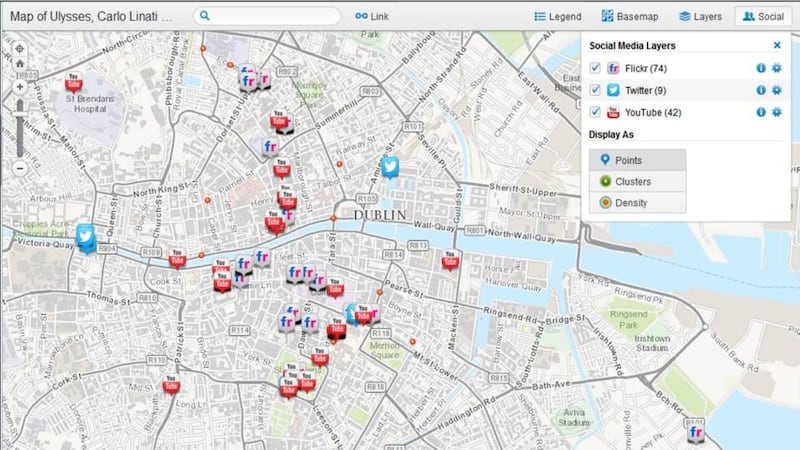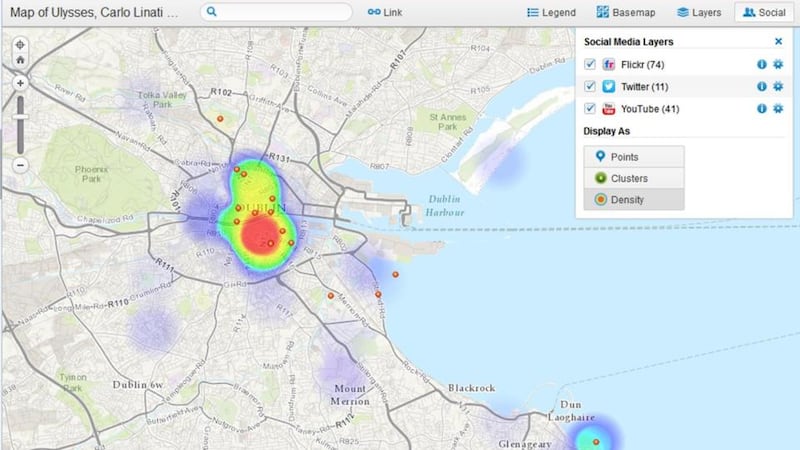A social media map of Bloomsday celebrations and how digital humanities can respond to climate change will be among topics explored at a day-long event in Trinity College Dublin on Thursday, June 18th, 2015 focusing on how digital practices and mapping technologies can foster deeper engagement between the humanities and the environment.
Networking the Digital Environmental Humanities Workshop will take place in Trinity Long Room Hub and will feature international scholars from a host of disciplines including environmental history, literary and historical geography, computer science, philosophy and literature.
Hosted by Trinity Long Room Hub and funded by the Irish Research Council the event will focus on how digital environmental humanities can be used as a platform to not only enhance the study of human-environmental relations, but to facilitate social transformation in regards to global environmental change.


Keynote speaker at the event will be professor of environmental history Poul Holm who will argue in his talk “Digital environmental humanities – What is it and why do we need it?” that the emerging field of environmental humanities is an academic response to the digital revolution and its disruption of design, tradition and human perception and behavior in the context of planetary changes, such as climate change.
Also at the event Dr Charles Travis, will present a paper on how he used GIS technology (geographical information system) to create a layered map of a Bloomsday digital eco-ecosystem unfolding on June 16th, 2014, the annual celebrations of James Joyce’s novel in Dublin.
Hourly surveys of social media platforms were mapped and interwoven with the 18 Homeric episodes of Joyce’s Ulysses creating an interesting picture of the themes and concerns of Bloomsday revellers across the world. Joyce’s Martello Tower in Sandymount and Duke Street in Dublin 2 were the site of the most posts in Dublin. Individuals in Dublin, Paris and Washington DC “resolved to again attempt to read Ulysses”. Twitter was the social media platform of choice for Bloomsday commentators.
Travis, research fellow at Trinity Long Room Hub, stated: “What is interesting about the social media mapping of Bloomsday, is that once can assume that many people posting tweets and other media to celebrate the day, may have never even read Ulysses. This has implications as Joyce’s 1922 novel is scripting human behaviour in Dublin today even for those unfamiliar with the novel, but who participate in Bloomsday. I think Joyce would have gotten a kick out of this. The UN IPCC panel on Climate Change has called for digital methodologies to be included in its 2021 report so these type human-centric “crowd-sourcing” digital mapping activities, influenced by literary, historical and cultural studies have a role to play in helping us understand the ‘cultural crisis’ that is climate change, in addition to being our age’s greatest environmental problem.”
A public lecture entitled Beyond GIS: The Spatial Humanities, Deep Maps, and Spatial Narratives by Pro David Bodenhamer, Head of the Polis Center at Indiana University Purdue, will take place at 6pm. Described as a vertical form of travel writing, Prof Bodenhamer will discuss how “deep mapping” allows juxtapositions and interpenetrations of the environment with the human, historical with the present, the political with the poetic and the discursive with the sensual.
The day will close at 7pm with the launch of two books – Abstract Machine: Humanities GIS (Esri Press: 2015) by Charles Travis and Deep Maps and Spatial Narratives (Indiana University Press: 2015) edited by David J Bodenhamer, John Corrigan and Trevor M. Harris.
For full programme and registration details please see here.











